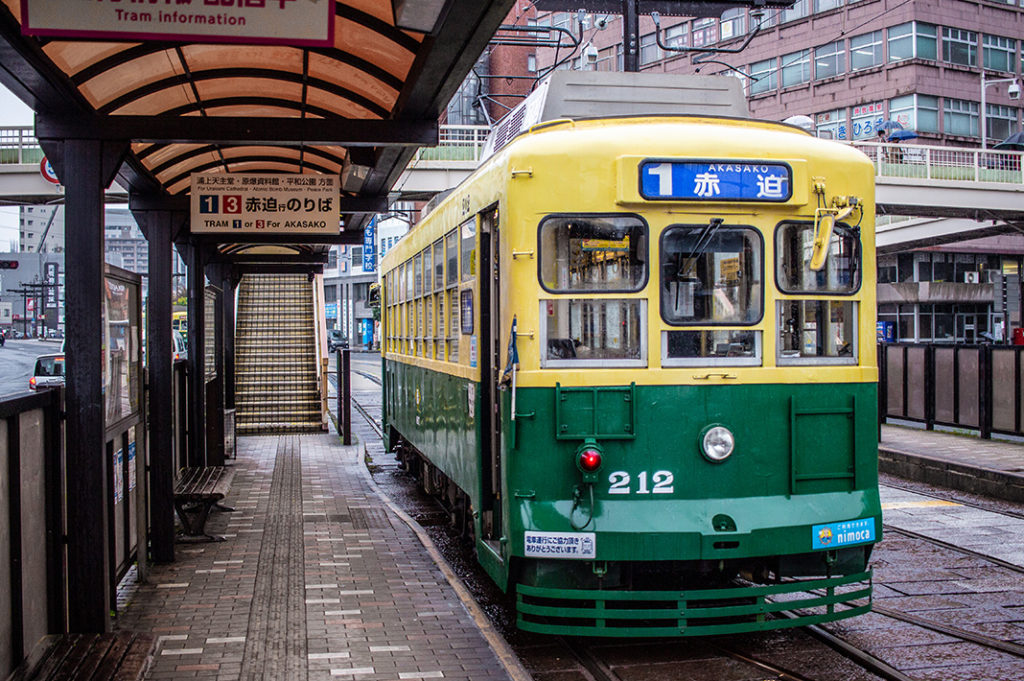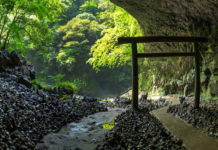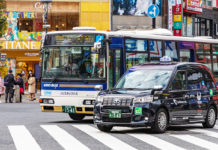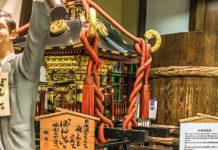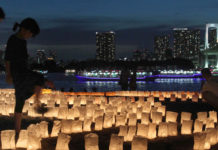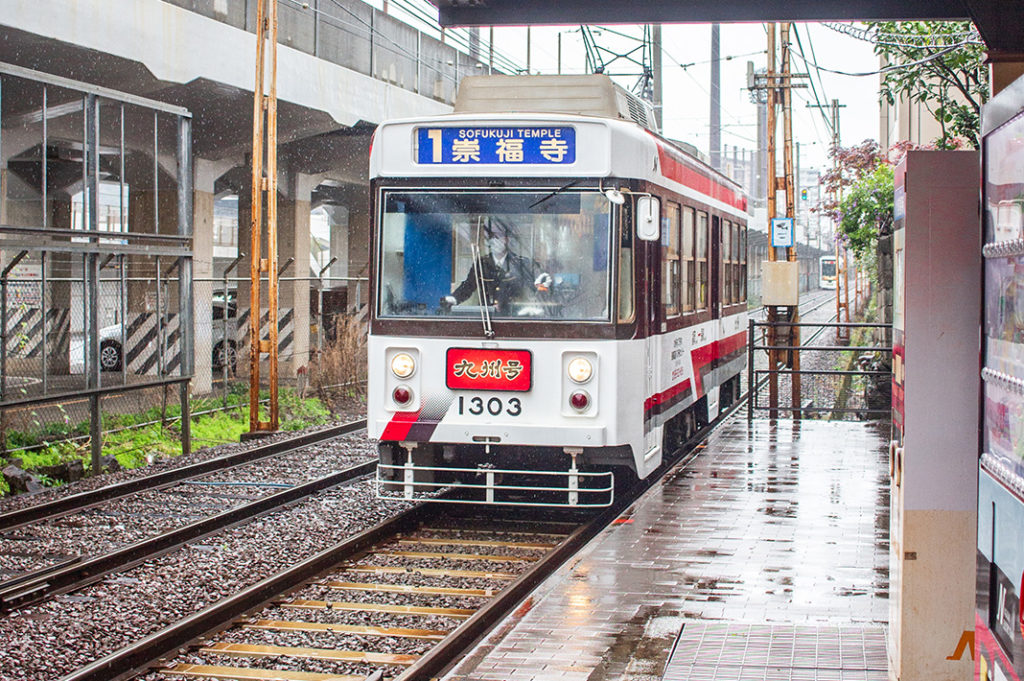
Nagasaki is a fairly compact city, but some of its best attractions can be found at complete opposite ends. While walking may be possible, public transport saves time, energy and ultimately allows you to cover more ground. There is a comprehensive bus network, but while you’re in Nagasaki, we recommend catching a streetcar. Opened in 1915, the Nagasaki tram system is one of a handful operating in Japan, making it an attraction in itself. Here’s everything you need to know about catching the tram in Nagasaki.
How to catch the tram in Nagasaki
Pick the right tram
The Nagasaki tram network is fairly straightforward with only 4 lines: red, blue, green and yellow. The blue (#1) and red (#3) lines connect passengers to the Atomic Bomb Museum, Mt. Inasa Ropeway and Nagasaki Station. The blue line also goes on to Sofukuji Temple via Chinatown, which is where you can transfer to the green line (#5) for Oura Cathedral and Glover Garden.

The tram stops are located in the middle of the road and have two platforms—for trams heading in both directions. Check the signage and screens to make sure you are getting on the right colour tram and heading in the right direction. I find the ‘public transport’ feature on Google Maps very helpful for getting around, too.
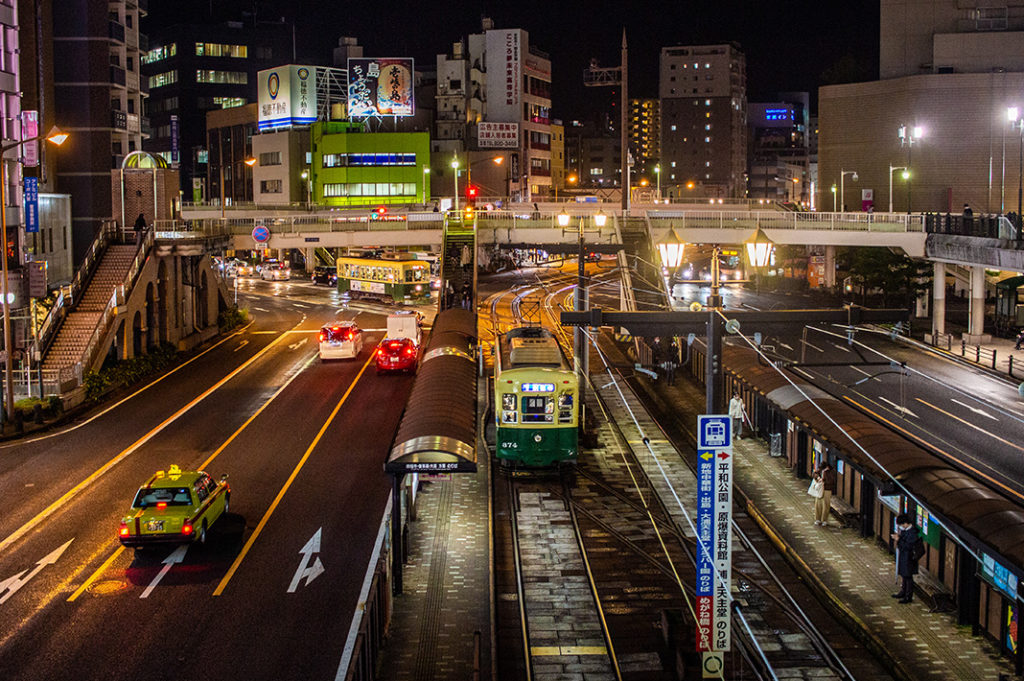
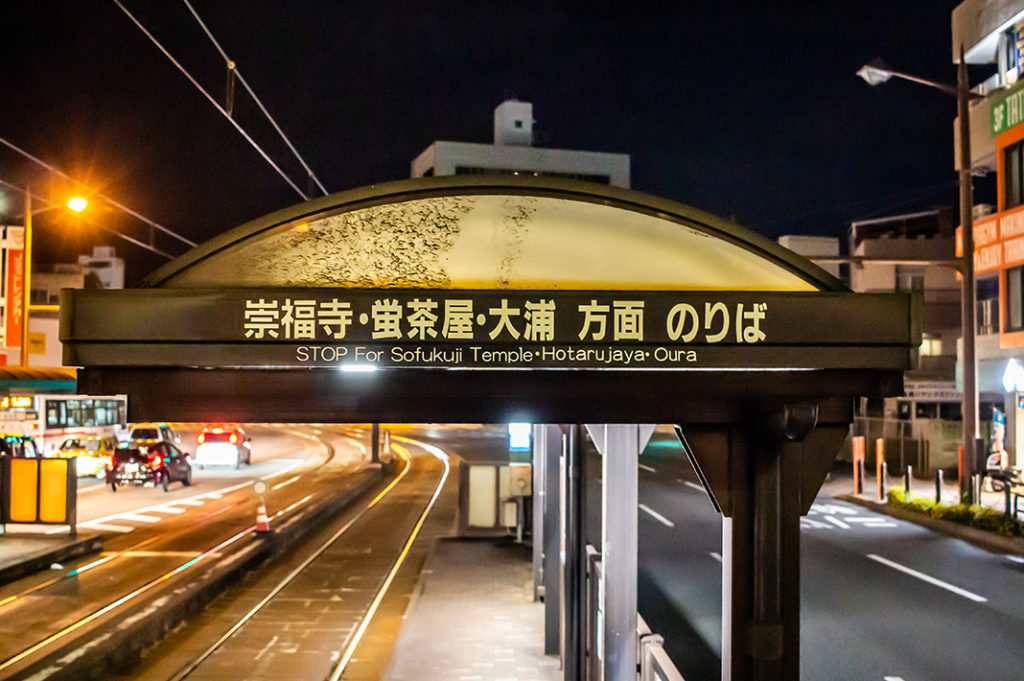
Boarding and exiting
In Nagasaki, passengers board the tram via the back door and exit at the front. If you are using an IC card, make sure you ‘tap on’—more on this in the next section. Take a seat or simply hold on to the poles or hand-holds. There are usually ‘stop’ buttons all over the place so you shouldn’t have trouble signalling when you need to get off. As you make your way through the city, you can keep track of upcoming stops thanks to the screen by the driver and the pre-recorded voice announcements. The helpful robotic voice will let you know, in English, what stop is next, and also which attractions are nearby. When you are ready to get off, head towards the front of the tram, where you will need to complete your payment for the journey.
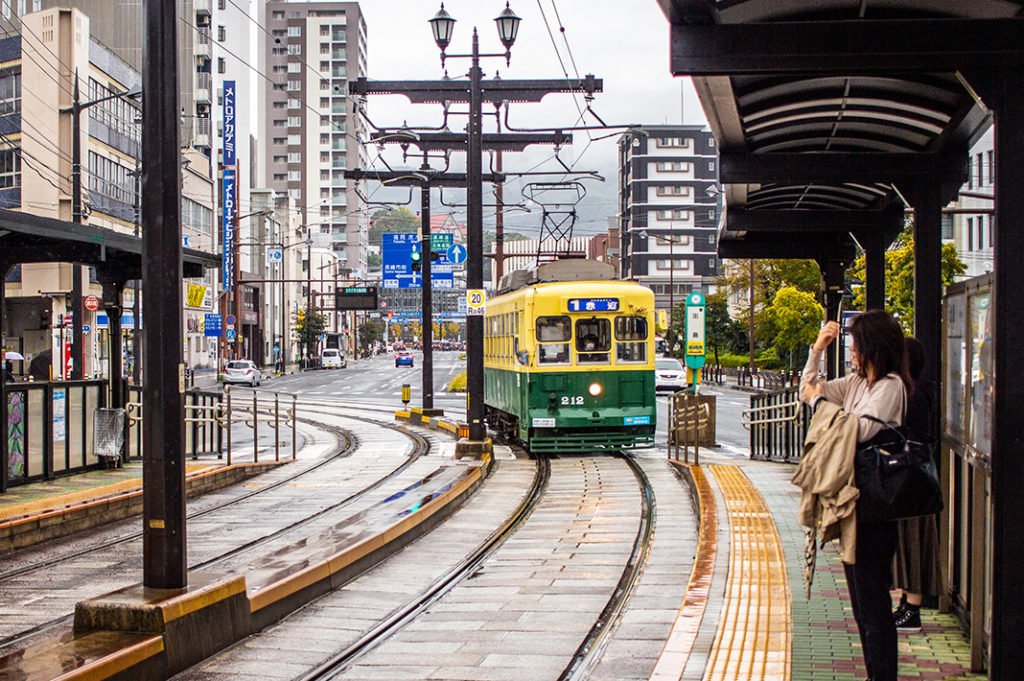
How much does the tram cost in Nagasaki?
At the time of writing, the tram costs a flat rate of 130 yen for adults and 70 yen for children, regardless of how long or short the journey. At the end of your ride, head to the farebox beside the driver and pay in one of a few ways: cash, IC card or by showing a one-day discount pass.
Cash
Calculate your fare—or the total fare for your family—and prepare the change in advance. As you exit the tram, drop the coins into the farebox beside the driver. If you don’t have the right change, there is a money changer slot in the farebox that accepts 1,000yen notes (around $10) and will spit out 100 yen coins in return. If you are planning on changing money, it’s polite to let others off first so you don’t hold up the flow.
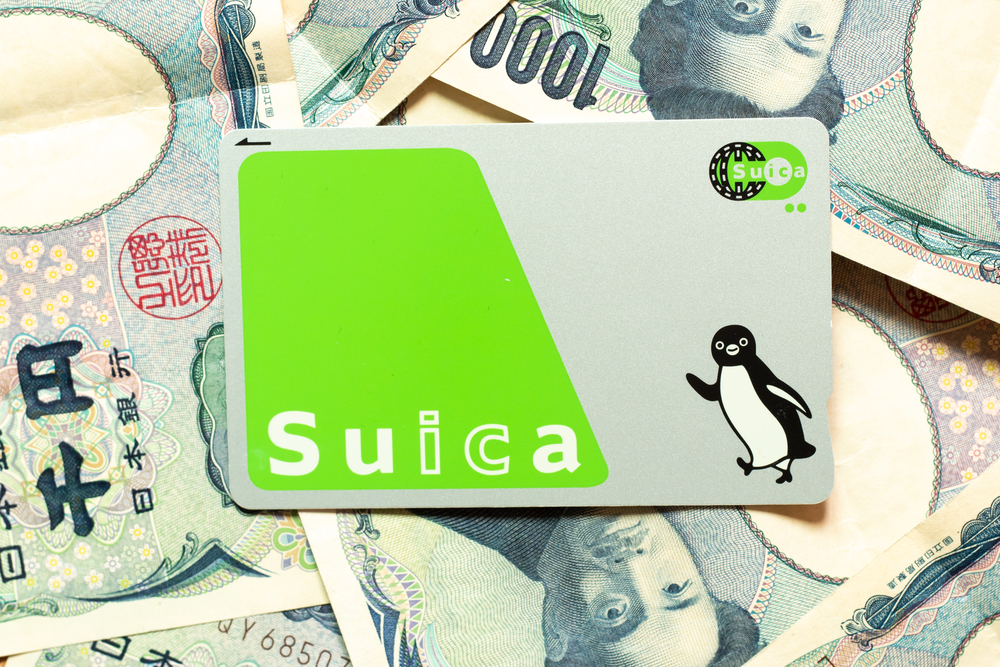
IC Card
In Japan, people who regularly commute tend to use rechargeable public transport cards collectively referred to as “IC Cards.” These are either a physical plastic card or a phone app. While the cards differ among prefectures, they can all be used nationally. Signs at the tram stops in Nagasaki indicated that any IC Card can be used onboard. In this case, make sure your card has money on it, then tap on when you enter the tram and tap off near the driver.

Discounted One Day Pass
If you plan on doing a lot of sightseeing and anticipate at least 3 or 4 tram trips, you could save a few bucks with a discounted one-day pass. Available from tourist information centers and many hotel receptions, they cost 500 yen for adults and 250 yen for children. They look like a pamphlet and contain a map as well as the day’s date. Note: there is a version of this for the bus network, too. In our mind, these are worth getting simply for the ease they bring to travel. With the one-day pass, there is no counting of change or asking the driver for transfer tickets, simply show and go.
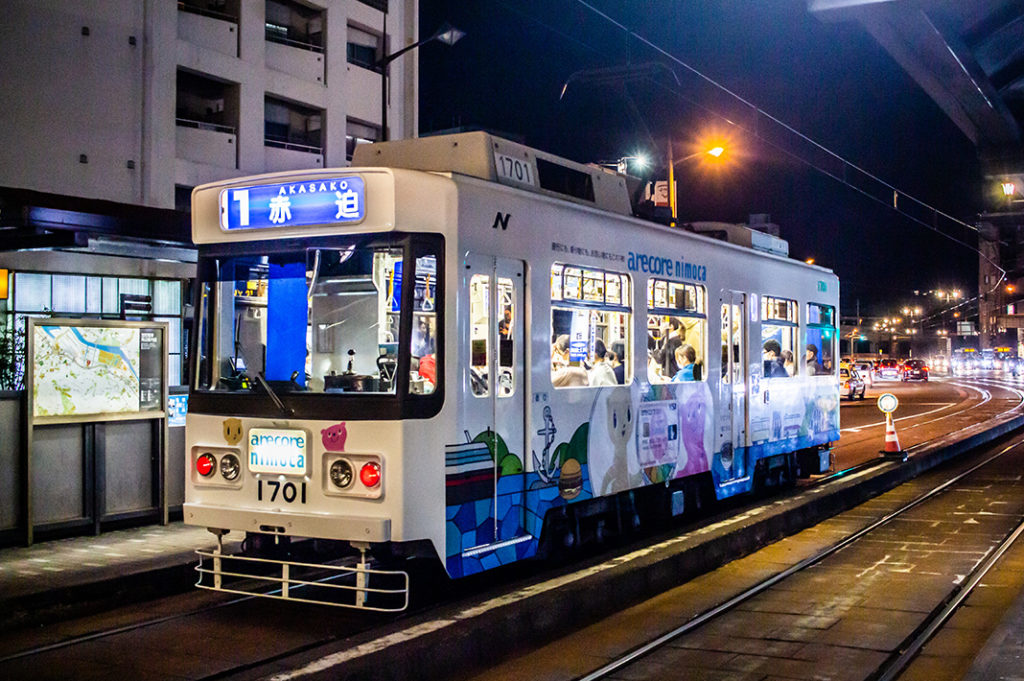
Transferring trams
As mentioned earlier, there are a few places where you may need to transfer onto a different line. The most common example would be when going from Nagasaki Station to Oura Cathedral. In this scenario, you would need to change from the blue line to the green line at Shinchi Chinatown. We should point out that you can transfer lines for free and the second leg of the journey counts as part of your single fare. Here’s how to do it:
If you have the one-day pass, all you need to do is show the driver, jump off the tram and head for the next one. Simple. When paying with cash or IC Card, you will need to pay your fare/tap off from your first tram ride and ask the driver for a transfer ticket. Just ask “nori-kae onegai-shimasu” and they will give you a small paper ticket. Take the ticket with you onto the next tram, and when you are at your final destination, deposit the ticket in the farebox by the driver. All fairly straight forward, with the one-day pass being the easiest.
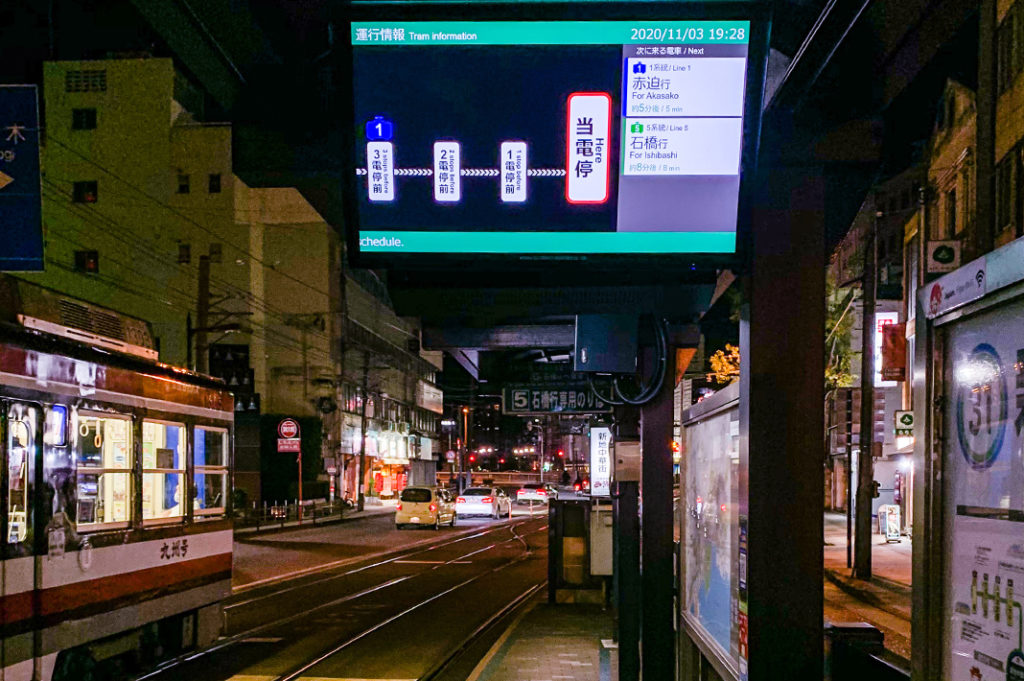
How often do the trams come?
The trams run from around 6:15 am until around 11:00 pm. During the day, they come every 2-5 minutes, but the frequency slows down as the night goes on and you could expect to wait between 8-11 minutes by the end of the night.
We hope this post has helped you to feel confident about using Nagasaki’s public transport system to travel through the fascinating city with ease.
Post by Japan Journeys.
